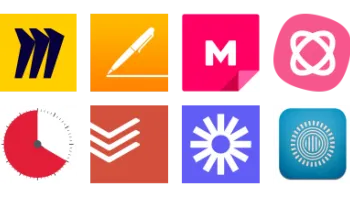Take a look inside 6 images
Todoist
Pros: Features like templates, recurring tasks, reminders, and the ability to share tasks across teams go beyond the everyday to-do list.
Cons: Kids might be overwhelmed by all the features and might get so distracted putting things on the list that they forget to actually do them.
Bottom Line: Mastering all of the features will take some time, but it's a dynamic app that promotes both individual and team productivity.
Whether managing their own workload or helping students develop essential organizational skills, teachers will find Todoist a platform worth trying out. Take student planners virtual by having kids type assignments, due dates, and level or priority in one task, and let them watch it populate their calendar and their priority list and set a reminder. Share project lists with group leaders and let them assign tasks to individual members to manage workflow and promote accountability. Planning a big project or unit? Break it down into multiple tasks with different due dates to make it more manageable, and track your progress along the way, earning Karma points for meeting goals you've set for yourself. Even multiple projects are no problem with customizable tags and color-coded priority markers.
If you're feeling ambitious, you can explore the dozens of user integrations, including Apple and Google calendars, Slack, Dropbox, and even a diet planner. Just make sure that in the quest to get things done, you and your students are mindful about which tasks are worthwhile and which are just taking up time.
Todoist is a cross-platform productivity app and website where students and teachers can manage tasks, calendar items, and individual or team projects. There are quite a few typical features, such as the ability to set up parent tasks, drag and sort tasks, and prioritize; there are also some less typical ones, such as sharing with or assigning tasks to collaborators, including notes, files, and messaging capabilities. Perhaps one of the more novel features is predictive scheduling. For instance, students can write, "Finish report this Wednesday at 2PM p1," and the note will be added to the calendar, a reminder set, and the item tagged as a top priority.
Forming positive habits takes time, especially when it comes to organization and productivity. Todoist can help students manage their tasks in ways that eliminate tedious steps, which may encourage reluctant kids to give it a try. Encouraging students to set up recurring tasks to do at school or home -- whether it be completing an assignment, meditating for 10 minutes, or reading to a sibling -- can help them discover the satisfaction and sense of accomplishment associated with taking responsibility. In projects that require students to work together, it's a neat tool to promote communication and teamwork. Students can even gain inspiration via pre-created templates that may prompt them to write more, stick to resolutions, or self-reflect about how they're spending their time.
The undo option could use a more permanent place -- it only lasts a couple of seconds. Also, Todoist may feel a little busy, especially at first. With so many ways to schedule, view, and organize tasks, kids may find themselves flipping from project to project to find the things they need to accomplish. Luckily, the search and sorting features can aid them here, helping kids to target items in a more manageable way.
It will take some work for students to get used to managing the tasks in ways that best fit their needs, and teachers don't want their students or themselves to get drawn into the habit of being busy for the sake of being busy. But with some guidance and some discussion about what's most important, Todoist can be a valuable tool to help students stay organized and persevere until they meet their goals.















